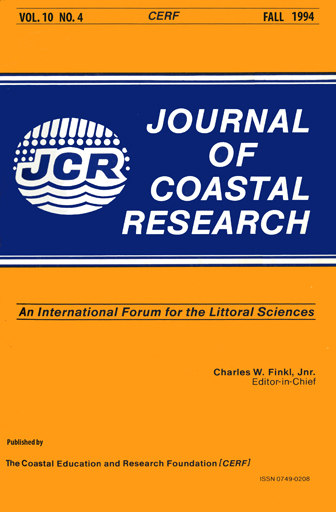The Morphology and Sediment Character of the Coastline of Nigeria-the Niger Delta
Keywords:
Coastal geomorphology, Niger Delta, sedimentology, shoreline segments, inlets/river mouths, and hydrographic regimeAbstract
The shoreline of Nigeria was divided into five distinct regions based on coastal geomorphology and sedimentological parameters. During a 4-year period (1982 through 1985), 60 beach profile stations were established and monitored, covering the entire country's shoreline. Data gathered at these field stations were complemented with extensive aerial overflights conducted off the coastline during all phases of the study. The purpose of the study was to define the detailed sedimentological and morphological aspects of the Nigerian coastline from field data. The morphological regions defined along the Nigerian coast from west to east are: (1) barrier-lagoon coast, (2) transgressive mud coast, (3) delta flanks, (4) arcuate delta, and (5) strand coast. These shoreline segments exhibit distinct beach/inlet morphologies and sediment characteristics in response to their available sediment sources and to the hydrodynamic process active along each segment. Sediments on the beaches range from silt and clay (transgressive mud coast) to medium-grained sand (barrier-lagoon coast) with beach slopes ranging from 1:90 to 1:6, respectively. The coastal sediments are composed mostly of well-sorted, fine- to medium-grained, quartz-rich sand. Coastal vegetation is highly variable with over 40 different coastal plant species identified, with the greatest diversity of species occurring within the Niger Delta region.


